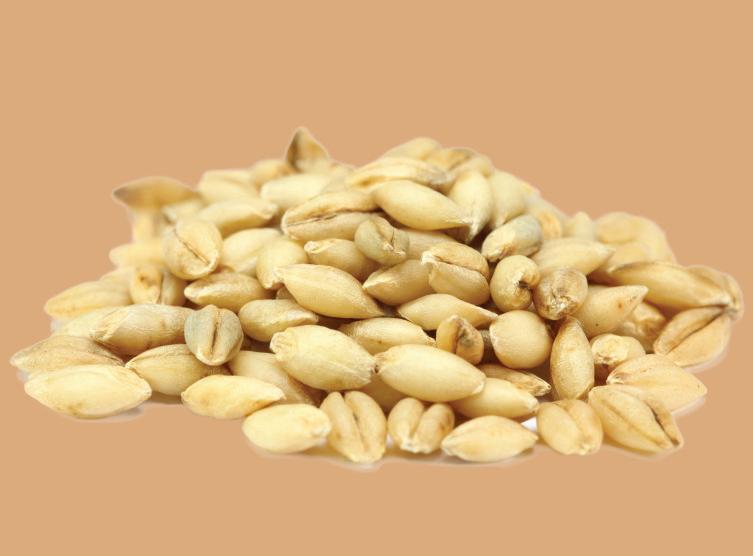
3 minute read
Barley
INTRODUCTION
Barley is grown in the U.S. and commonly used as a grain for human consumption, for malt in alcoholic beverages, and for animal feed. Whole grain barley consists of the bran, endosperm, and germ, which are still connected. Hulled and hulless are two forms of whole grain barley. Hulled barley goes through little processing with only the outer hull removed and is the most nutritious. With hulless barley, the hull is loosely connected and usually falls off aft er being harvested. Th is requires little to no processing to remove the outer hull, leaving most of the bran, endosperm, and germ still intact (Conway, 2006).
Advertisement
Varieties: Th e varieties of barley that can be purchased for human consumption are pearled barley, quick barley, barley fl our, barley fl akes, and barley grits. Th e process that pearled barley goes through consists of the removal of the inedible hull and bran layers; the quantity of layers removed determines if the pearled barley is regular, medium, fi ne, or baby pearl (Lemaux, 2007). Th is process causes the barley to lose a lot of nutrients; however, it cooks faster and the taste and texture is usually preferred (Beck, 2013). Quick barley is the instant form of pearled barley that is steamed before packaging, and it has the same nutritional content as pearled barley. Flour can be made from pearled grain through milling. Flakes are made from pearled barley but are steam rolled and dried. Grits are the small pieces of pearled barley.
QUALITY & PURCHASE
Barley can be purchased in the forms of pearled, hulled, and fl aked. Purchase barley that is clean, dry, free from debris,
and fresh smelling. Pearled barley may be the easiest form of barley to fi nd. All varieties may be found at health food stores.


PACKAGING
Barley should be stored in food-grade packaging, that is moisture-proof, like Mylar® bags, polyethylene bags, plastic buckets, or No. 10 cans.
STORAGE CONDITIONS & SHELF LIFE
Th e recommended shelf life of barley is 2 years. Barley should be stored in temperatures below 60° F with moisture content of less than 12 percent (Barley Facts, 2007). For a longer duration of storage, barley should be kept at even cooler temperatures and lower moisture content. A long-term shelf life would be for only 8 years because of the soft ness of the outer shell (Portela, 1999).
NUTRITION
Barley contains gluten, so it should be avoided by those individuals with celiac disease and gluten intolerance. In ¼ cup of uncooked pearl barley, there is on average 2.5 g of beta
BARLEY NUTRITION
Calories (1 cup) Carbohydrates Sugars Fat Protein Sodium Dietary Fiber 193 44 g 0 g 2 g 4 g 5 mg 6 g
Percentages are relative to U.S. recommendations for adults. Nutrient data for this listing was provided by USDA SR-21. Nutrition Data. Available at: http://nutritiondata.self.com/facts/ cereal-grains-and-pasta/5680/2
ALLERGIES: Compared to oats and wheat, barley has a higher percentage of beta-glucan content because beta-glucan is throughout the whole barley kernel. Th e beta-glucan in other grains is only in the bran layer and is removed when the bran is removed. Even products that are refi ned, like barley fl our, contain beta-glucan (Conway, 2006). Barley Nutrtion: Barley is high in fi ber, selenium, iron, and niacin. Studies have shown that barley is more eff ective in lowering blood cholesterol than wheat or rice because of its beta-glucan content. For best health benefi ts from barley, 3 grams of beta-glucan should be consumed each day.
USE FROm STORAGE
Barley should be rinsed before cooking. Hulled barley will take longer to cook than pearled barley. Barley fl our can be combined with wheat fl our to make baked goods. It can’t be substituted on its own, because it doesn’t have a strong enough gluten content. Barley fl akes and cracked barley can be used for hot cereal. Barley can also be added to salads and stews.









